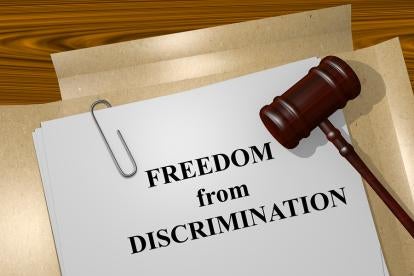On Monday, for the second time in less than a year, a federal appeals court ruled that Title VII forbids sexual orientation discrimination because it is a form of sex discrimination. This time, in Zarda v. Altitude Express, Inc. the Second Circuit overturned decades of precedent and ruled that Title VII’s ban on discrimination “because of . . . sex” encompasses discrimination based on sexual orientation. The decision is also an apparent rebuke of the position taken by the United States Department of Justice (contrary to the Equal Employment Opportunity Commission’s position) that sexual orientation discrimination was never intended to by Congress to be covered by Title VII. The issue is almost certainly headed to the Supreme Court in its next term.
A three-judge panel of the Second Circuit first heard the Zarda case in 2017 and found itself in the bind of its own circuit precedent decided many years ago, giving the panel no choice but to rule against Zarda. But the circuit judges agreed last fall to take up the case en banc, meaning that all 13 judges of the Second Circuit heard the case and weighed in. Only a federal appeals court sitting en banc (or the United States Supreme Court) can overrule its own circuit precedent. Sitting en banc, ten of the thirteen judges agreed that Zarda’s claim for sexual orientation discrimination is cognizable under Title VII of the Civil Rights Act of 1964.
In a lengthy 69-page opinion (with myriad concurrences and 80 pages of dissents also filed), Chief Judge Katzmann cobbled together majorities around two propositions the court found to be axiomatic: (1) that sexual orientation is per se sex discrimination because sexual orientation is a function of an individual’s sex; and (2) that sexual orientation discrimination is predicated upon an employer’s disapproval of romantic relationships between persons of the same sex, ergo, sexual orientation discrimination is associational discrimination. Pluralities of the 13 judges endorsed other theories such as that sexual orientation discrimination is sex discrimination because gay and lesbian employees would not have been treated adversely “but for” their sex, and that sexual orientation discrimination constitutes gender stereotyping, which the Supreme Court has long held is a form of sex discrimination.
The court took great care to marry its analysis to the statutory text and to decades of Supreme Court Title VII jurisprudence. The court rejected the dissents’ (and the government’s) argument that Congress cannot have intended in 1964 when it enacted Title VII for the statutory language “because of…sex” to encompass sexual orientation discrimination. To quell the dissents, the court quoted the majority opinion, penned by the late Justice Scalia, in a 1998 case that, for the first time, extended Title VII’s prohibitions to same-sex harassment: “Statutory prohibitions often go beyond the principal evil to cover reasonably comparable evils, and it is ultimately the provisions of our laws rather than the principal concerns of our legislators by which we are governed.” And so it follows that whether or not Congress imagined in 1964 that its enactment would one day protect gay and lesbian employees from discrimination does not limit the reach of the statute. Title VII was enacted as a broad proscription against workplace discrimination.
While all three states in the Second Circuit (New York, Vermont, and Connecticut) already have state law protections against sexual orientation (and gender identity) discrimination, this decision paves an avenue through the federal court system to assert claims of sexual orientation discrimination under Title VII. Employers operating in these states should ensure that their non-discrimination and non-harassment policies and training materials are up to date. Employers in other states should be sure to check applicable state statutes, as many states have enacted anti-discrimination statutes explicitly protecting employees from sexual orientation discrimination. Even in states without such laws, protecting employees from sexual orientation discrimination is just good HR practice.



 />i
/>i
